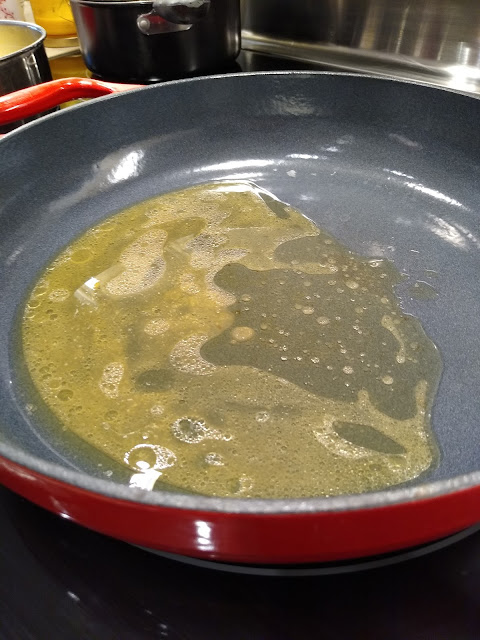I've been working on this post for a couple of months off and on and while I see how my 2020 reading list is quite paltry, I do have some memorable and sweet books I enjoyed. Here is the list I've gathered to record my efforts beginning with some children's books.
Before Morning by Joyce Sidman, illustrated by Beth Krommes
This is another collaboration of a children's picture book between these two talented women. Joyce Sidman has written several wonderful children's poetry books on natural history topics in addition to a biography of butterfly artist, Maria Merian which I have enjoyed borrowing from a friend. Beth Krommes has illustrated many wonderful titles and is a Caldecott award winner. I shared a book she illustrated in an older post from 2015 that we enjoyed, entitled Blue on Blue.
In this title, the artwork carries the reader and provides the clues and details that the text hints at in poetic form. Sidman refers to her text as an invocation, which is like a prayer or for some, a wish. If you look carefully at the pictures, you will see the thread of the story convey what the words do not say.
A wonderful book like this, teaches you to be attentive and not rush through the pages. This is a perfect winter's read, but also for those who must travel and for those who must say goodbye.
Also, the urban setting depicted in Krommes' beautiful art interested me as I continue to read and learn about the patterns that good towns and cities share. The walking through city parks and past bakeries and shops and services in pleasing and traditional architecture to homes mixed in is captured honestly and imaginatively. The more you look at this book, the more you will notice, even on the varying endpapers.



Kamishibai Man by Allen Say
Allen Say writes and illustrates children's books that adults need to read. In this title, he brings us his childhood memories from Japan of eating candy and listening to stories told by the kamishibai man. What I noticed is how the man reenters the city on his bicycle after years of being away. The changes to the city are not portrayed as beautiful. Say uses grays and shadows as the old man bicycles around. In contrast, the younger years are full of greens and yellows and trees as the flashback scenes tell the story. Something my husband has repeated often to me from his media class in high school is that directors do not include specific details 'just because'. Everything you see is intentional and meant to tell the story and carry meaning. Kamishibai Man is full of details and artwork that conveys thoughtfulness but without moralizing.
The Skippack School by Marguerite de Angeli
While Eli would prefer to play and be outside, his German-born parents have moved he and his younger sisters to the new world of Pennsylvania where he must attend school and learn to read. He has much encouragement from his school master and even the promise of a special reward if he can diligently study and learn to read. But for a young boy, life holds much fun and adventure and sometimes difficult consequences that challenge Eli to grow up.
A short story filled with black and white illustrations that take the reader back to the colonial days of Eastern Pennsylvania. This story took place about an hour from where I was raised and the town names were familiar although I haven't been to the exact locations mentioned.
The Death of Socrates, by Jean Paul Mongin, illustrated by Yann Le Bras, translated by Anna Street
I found this copy at my local thrift shop and brought it home out of a strong curiosity for who it was published for. The author, Jean Paul Mongin is a French writer who has written a series for children introducing them to philosophers, their ideas and their life. I found the book written for children brought Socrates and his life into my understanding in a whole new and remarkable way. I have several sections that I am copying to my notebook and even though it has been translated for English readers, the phrasing feels fresh and memorable. Only a handful of the series so far has been translated into English, but I would love to add more of these titles to our home library.


We read this aloud together as part of our Morning Time in Term 1 a few pages each week. Hodges provides a history of theater in a simple form as playacting in tribal group to Bible scenes acted out in cathedrals to amauter actors taking plays on the road to the building of theater halls in Shakespeare's London. We enjoyed reading this and looking carefully at the illustrations he provided and explained in his text. Hodges recounts how the villains and devil characters were often the favorite scenes in a church play and that informed play-actors as to hoe better entertain their audiences. Moving from inside the cathedral, to outside in the street, to portable and movable stage sets and then finally to relatively permanent wooden theater buildings, Hodges shows the reader the evolution and culture of theater up to the time of Shakespeare.
Anne Frank: Life in Hiding by Joanna Hurwitz
This children's biography is only 64 pages but it was a good way to introduce my children to the short life of Anne Frank who captures for the modern person, the tragedy of many children and their families living in Europe during WW1 and WW2. We all read it and found it sobering yet full of living and being even under the most direst of circumstances.
Marjorie Daw by Thomas Bailey Aldrich, illustrated by John Cecil Clay
I first read this short story in a collection we own, but when I found this illustrated edition, I had to have it even as it is falling apart at the binding. You can only read this story once to get the full effect, but once you know, rereading it makes you in on the fun. This story is told in letters written between an infirmed and cantankerous young man and his friend living out in the country. He begs his friend to write to him and distract him from his confinement and his friend obliges. The illustrations are amazing in this edition, but the story can easily be enjoyed with any version.


This detective story like many in the genre remind its readers to remember Proverbs 18:17 in which the wise person is counseled to see that the first person who presents a case sounds right until another comes and examines them. It's been many months since I read this story and I remember not really caring who turned out to be the rightful owner of the fabled 'Maltese Falcon' statue because none of the characters were particularly endearing. At least then, you want to see right triumph over wrong but even here it seems unlikely to sort out that puzzle. Like many books, this story makes you think: can you really say you've read it, if you've only read it once?

My friend Vanessa first read this book and recommended it to me. So I requested it from the library and when it came in, I had a stack of other books I was working on, so I started the Introduction and wondered where the memoir was and gave up when the library due date came up. Then I found a used copy and added it back into my innumerable to-be-read stack. A chapter or two in, it became the book I read at the beach and the splash pad and on Saturdays. It was horrifying but also intriguing and enlightening. I learned a lot about areas of the states that I did not know anything about and it connected some dots for me about other topics. Overall, I'm glad I read it, although I'm not sure I want to see the movie version that recently was released. Some scenes are hard to imagine watching acted out but maybe I will get curious one day and give the movie a chance.

In 2019, I read Susan Hill's
Howard's End is on the Landing and she spoke of author Barbara Pym so highly that I made a mental note to look out for her books. So far, I've only found one in my book thrifting efforts and I've now read it twice.
This is written as a first-person narrative by a British unmarried woman, Mildred, set in post-war London suburbs who finds herself with new neighbors, new gossip and new entanglements. She has her own interests and friends most of which revolve around her Church of England parish and is not unhappy about her single life but finds meaning in a part-time job helping the less unfortunate. She has several male bachelor friends but none of them strike her as husband material for herself. Then the next-door flat is rented by a married couple whose life becomes closely intertwined with hers as marital woes afflict them. The title 'Excellent Women' is referred to several times in the story as Mildred assesses herself and others and it is likely that this is a possible reference to Proverbs 31 where the wife of noble character is described.
This is a thoughtful book with insightful ideas of the home life and marriage and Pym's addition of wit and humor makes it a worthwhile read for me.

What a delightful introduction to the Emily series! Many people know Anne of Green Gables, but Emily Starr is her own girl written with care, humor and purpose. This story highlights what we know in real life, some adults understand the mystery of childhood and others do not. Emily meets with both while she herself wonders at the world of adults. I look forward to reading the other two books in the series this year.
One of my favorite quotes in the story is this witty observation made by Emily:
Aunt Elizabeth wore her black satin dress with a pointed lace collar and cap. She looked quite handsome and I was proud of her. You like your relatives to look well even if you don't like them.





























































